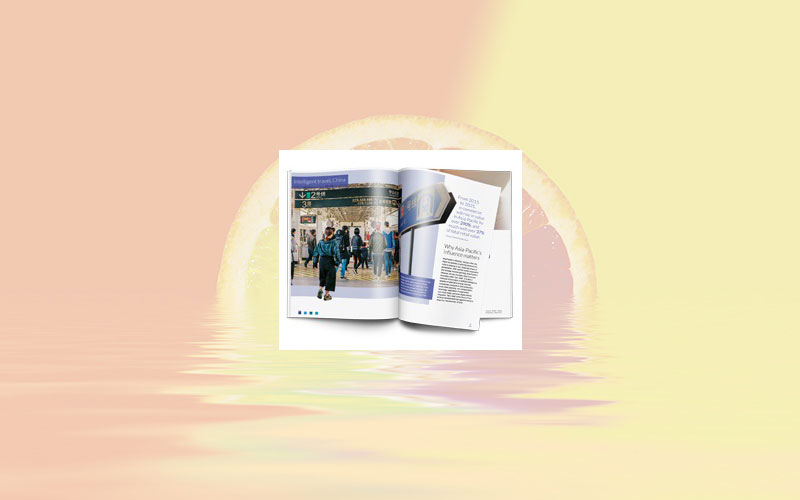Mintel predicts the future of ‘new retail’
The future of Asia-Pacific’s retail landscape will force a fundamental change in the way Asian companies are structured, managed and do business.

The future of Asia-Pacific’s retail landscape will force a fundamental change in the way Asian companies are structured, managed and do business. The region is innovating in a new direction towards a future that suits its own aspirations and needs—and retail technology is leading that innovation. Asia-Pacific is also changing the framework and focus of globalisation, and that role will only increase.
In Mintel’s new whitepaper, ‘New Retail: The Futurenomics of Asia-Pacific’, Matthew Crabbe, Regional Trends Director, Asia-Pacific, combines Mintel’s latest research to paint a picture of what the future will look like for the economy, based on existing trends and trajectories in ‘new retail’, and its influences already being felt across the region.
‘New Retail: The Futurenomics of Asia-Pacific’ is broken down into four key discussion points, summarised below by Matthew Crabbe, Regional Trends Director, Asia-Pacific:
Digitisation: Futurenomics nears critical mass
“E-commerce growth is fast-moving and on a massive scale. According to Mintel estimates, e-commerce spending across Asia-Pacific* will increase from 3.6 % of total retail spending in 2010 to 31.4 % by 2020. What’s more, from 2015 to 2025, e-commerce will rise in value by over 290 %, and reach well over 37 % of total retail value across Asia-Pacific*. This growth has created a new critical mass with the convergence of online and offline retail and services into ‘new retail’.
“The online economy is a crucial part of Asia-Pacific’s current and future economic growth. It is also a major part of the continuing integration of the economies and consumer spending patterns across the region. Meanwhile, Asia is not just innovating within ‘new retail’, it is also a hothouse of innovation in artificial intelligence, application of augmented and virtual reality, revolutionary concepts in food production, among many others. And ‘new retail’ is the focus of how all these developments are agglomerating to shape the ‘futurenomics’ of Asia.”
Integration: The value of experience
“‘New retail’ is a process, rather than a market, where the ‘space’ of e-commerce increasingly integrates with physical shopping spaces. It is also a part of a wider integration process into the broader digital consumer services environment, and across all consumer product sectors. Places and processes for shopping are integrating with entertainment, travel and socialising—which is great as a third (32 %) of urban Thai consumers say they are spending more on leisure and entertainment in 2018.
“Brands are finding that they are being drawn into their own integration across sectors. Services brands are merging with retailers; retailers are becoming hoteliers; online platforms are becoming transportation provides—everything is mixing up. This means that brands must now engage with consumers across formats, platforms, technologies, locations, nations and sectors, and find relevance across more aspects of consumer lifestyles.”
Consolidation: More people in less space
“Asia-Pacific’s population is rapidly urbanising into some of the world’s largest cities, creating the potential for ‘new retail’ to develop faster in the region. In India, a quarter (25 %) of urban internet users who shop for groceries do so from online supermarkets at least once a month. Meanwhile, in Indonesia, over half (56 %) of urban smartphone owners have made a purchase through an online retail site or app.
“Urbanisation is likely to be significantly influenced in the future. To meet the needs of vast, crammed populations of tomorrow, cities will have to adapt to new technology. ‘New retail’, with the ability to reach anyone, anywhere, via their smartphones, offers a unique solution to connecting with consumers. Companies in the ‘new retail’ industry are encouraged to spread their influence across the region. In fact, ‘new retail’ is already expanding rapidly across the region through the influence of China’s leading operators.”
Migration: From brawn to ‘e-brain’
“As Asia-Pacific’s populations get older, there will be an increasing need for greater productivity as ‘working age’ populations shrink. This will drive the need for ongoing education and long-life learning to keep up with and adapt to new technologies. Mintel research reveals that as many as three in four (72 %) urban Thai consumers say they want to learn a new skill, while three in five (59 %) urban Chinese mums agree that early education should start as early as possible.
“Technology in production—manufacturing and agriculture, for instance—is leading to a shift from a ‘brawn economy’ to ‘brain economy’. Already new technology has democratised the means of production. In an environment where ideas become currency, we see the emergence of what is now known as the ‘Fifth Estate’. It is where outlier, disruptor and social groupings become instigators of change in mainstream society. ‘New retail’ will be the foundation upon which new economies will be built, and Asia-Pacific is leading the first wave.” Concluded Crabbe.
*Asia-Pacific estimates are based on the following markets: Australia, China, India, Indonesia, Japan, South Korea and Vietnam









